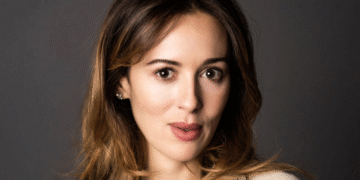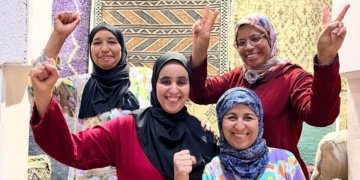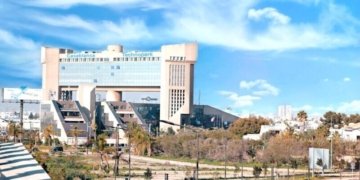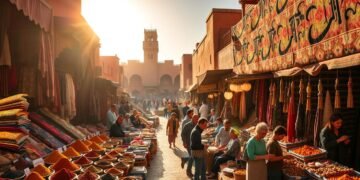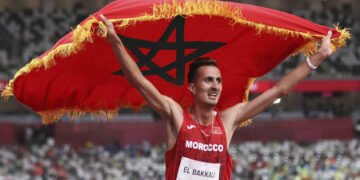Morocco, a country known for its vibrant culture and rich history, boasts a diverse range of traditional clothing that reflects its unique heritage. From the iconic Djellaba to the elegant Kaftans and the distinctive Fez hat, the clothing of Morocco and Moroccan attire is a testament to the nation’s artistic craftsmanship and cultural traditions.
Introduction
The clothing of Morocco holds deep cultural significance and serves as a visual representation of the country’s history, traditions, and regional diversity. This article delves into the fascinating world of Moroccan clothing, exploring its traditional garments, symbolism, and modern adaptations.
Traditional Clothing of Morocco
Historical Background
The roots of Moroccan clothing can be traced back centuries to the influence of various civilizations, including the indigenous Berbers, Arab conquerors, and Andalusian refugees. These diverse cultural influences have shaped the unique styles and designs found in Moroccan garments today.
Traditional Garments for Men and Women
Moroccan traditional attire differs between genders. Men often wear Djellabas, loose-fitting robes made from lightweight fabrics such as cotton or wool. Women, on the other hand, don a variety of garments, including Kaftans, Takchitas, and Jabadors, which are characterized by intricate embroidery, vibrant colors, and flowing silhouettes.
Djellaba: The Iconic Moroccan Robe
Description and Features
The Djellaba is perhaps the most recognizable piece of Moroccan clothing. It is a long, hooded robe with wide sleeves, traditionally worn by both men and women. Djellabas are designed to provide comfort in Morocco’s diverse climate and are often made from breathable fabrics to combat the heat.
Symbolism and Significance
Beyond its practicality, the Djellaba holds symbolic meaning in Moroccan culture. It is associated with modesty, as its loose-fitting design reflects Islamic principles of humility and simplicity. The hood of the Djellaba, known as a “Kabbah,” has cultural and religious significance, signifying protection and spirituality.
Modern Adaptations
In recent years, the Djellaba has evolved to incorporate contemporary fashion trends while preserving its traditional essence. Fashion designers have introduced new colors, patterns, and embellishments, catering to both local and international markets. The Djellaba has become a symbol of Moroccan identity and a fashion statement that blends tradition with modernity.
Kaftans: Elegance and Luxury
Origins and History
The Kaftan, synonymous with elegance and luxury, originated from the Ottoman Empire but found its way to Morocco, where it was embraced and adapted. Originally worn by the elite, Kaftans were crafted from sumptuous fabrics, adorned with intricate embroidery, and embellished with precious gemstones.
Design and Embellishments
Kaftans are characterized by their loose, flowing silhouettes, and they can be adorned with a variety of embellishments such as sequins, beads, and metallic threadwork. Each region of Morocco has its distinctive design elements, colors, and patterns, making Kaftans a visual representation of local craftsmanship.
Popularization and Global Influence
In recent years, Kaftans have gained global popularity, transcending cultural boundaries and becoming a staple in the fashion industry. Renowned designers have embraced the Kaftan’s elegance and versatility, incorporating Moroccan-inspired designs into their collections. Today, Kaftans are not only worn on special occasions but also as stylish and comfortable everyday attire.
Fez: The Traditional Hat
History and Cultural Significance
The Fez, also known as the Tarboosh, is a distinctive hat that holds a significant place in Moroccan culture. It originated from the city of Fez and gained popularity during the Ottoman Empire. The
is traditionally made from felt and features a flat crown and a tassel.
Styles and Materials
Fez hats come in various styles and colors, with each design reflecting specific cultural and regional associations. The tassel of the Fez can be colored differently to denote marital status or social standing. Today, Fez hats are often made from different materials, including wool, silk, or synthetic fibers, to cater to diverse preferences.
Contemporary Usage
While the Fez hat is no longer an everyday accessory for Moroccans, it remains an essential part of ceremonial and cultural events. It is often worn during traditional festivals, weddings, and religious ceremonies, serving as a symbol of Moroccan heritage and pride.
Berber Clothing: Rich in Tradition
Berber Tribes and Their Clothing
The Berbers, indigenous to North Africa, have a rich cultural heritage, and their traditional clothing reflects their deep-rooted traditions. Berber garments vary across different tribes, each incorporating unique patterns, colors, and materials.
Amazigh Dress for Men and Women
Amazigh men traditionally wear long robes known as “Takshitas,” often made from wool or linen. Women’s attire includes “Tazaroft” or “Tadellakt” dresses, characterized by bold colors, intricate embroidery, and jewelry. Berber clothing celebrates the cultural identity and craftsmanship of the Amazigh people.
Preservation of Berber Clothing Heritage
Despite modern influences, efforts are being made to preserve and promote Berber clothing traditions. Local artisans and cultural organizations collaborate to ensure the continuity of traditional techniques, supporting the livelihoods of communities and fostering appreciation for Berber heritage.
Last but not least
The clothing of Morocco reflects the nation’s diverse history, cultural heritage, and regional traditions. From the iconic Djellaba and elegant Kaftans to the traditional Fez hat and richly adorned Berber garments, Moroccan clothing is a vibrant tapestry that weaves together past and present. Embracing the beauty and symbolism of traditional attire helps preserve Morocco’s cultural identity and fosters a deeper appreciation for its rich heritage.


